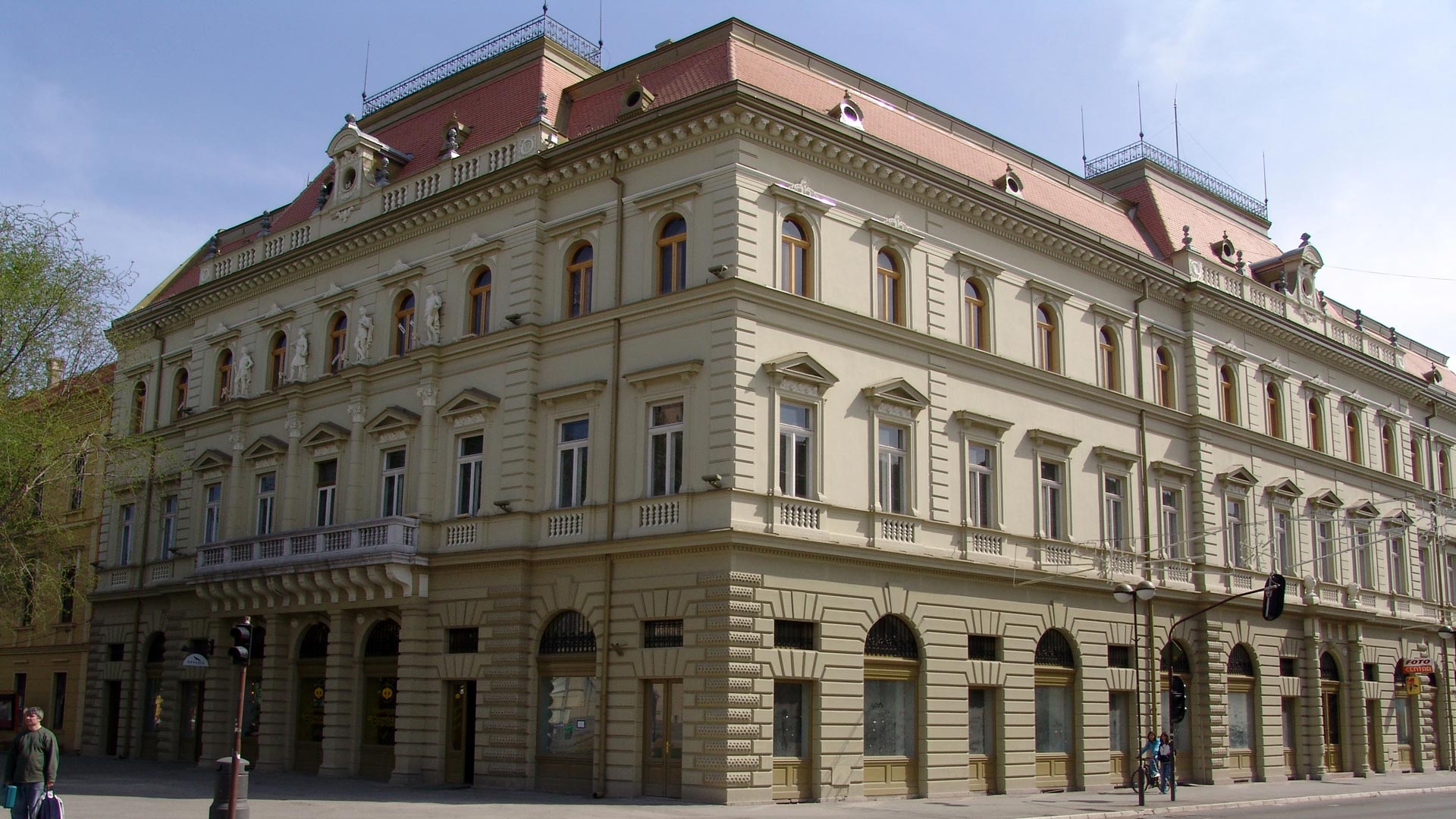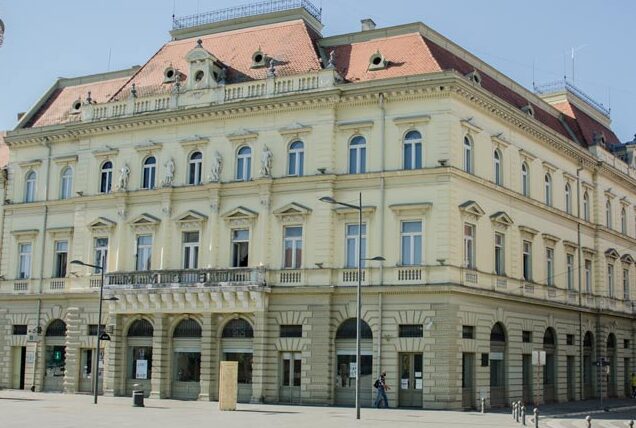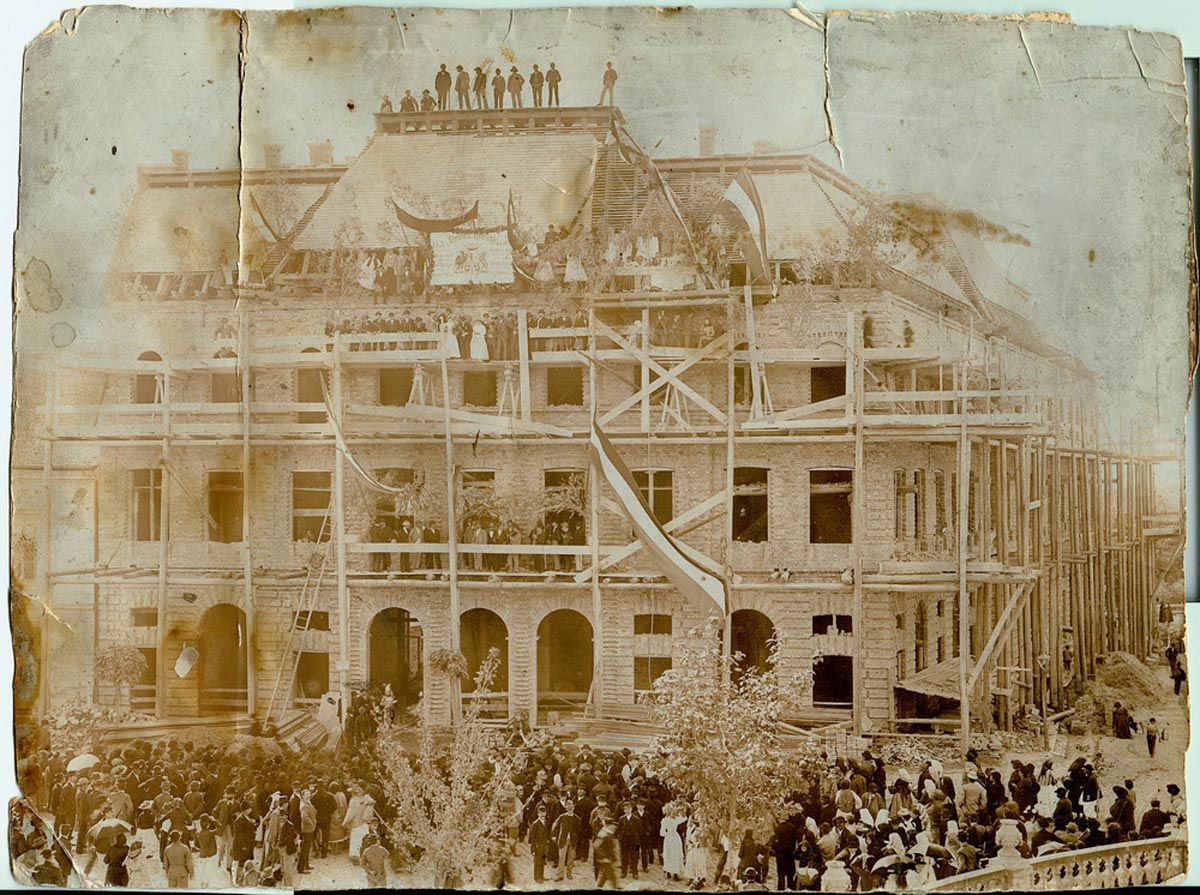The mission of the National Museum is preservation, protection, presentation and interpretation of the rich cultural heritage of the middle Banat, in the fields of nature, archaeology, ethnology, art and history, as well as continuous education and work with the public.

The vision of the National Museum is to be a top example of organization, presentation and sustainable use of cultural heritage, and to occupy an important place in the interpretation of the historical, cultural and natural heritage of the middle Banat and Serbia.
The National Museum of Zrenjanin, by nurturing multiculturalism, plays a very important role in the social life of the local community, and has a large number of visitors annually. Following modern museological trends, the Museum emphasizes educational programs and implements them through workshops and other activities – exhibitions, screenings, promotions, etc.
Through the various programs, different groups of the local community are included – children of school and preschool age, people with disabilities, groups of amateurs, various professional associations, elderly people, etc.
The goal of the Museum is to reach the quality of exposition of European institutions and museums.

The idea to establish a museum in Zrenjanin (formerly Veliki Bečkerek) was initiated by the city’s group of intelectuals and representatives of the authorities of the former Torontal County at the end of 1902 and the beginning of 1903. Then, on the proposal of the Torontal Hungarian Cultural Association, a decision was made to establish a county library and museum, and for this purpose a special committee was formed headed by the then grand prefect Dr. Lajoš Delimanić. Citizens were invited to collect old vessels, weapons, tools, tools, jewelry, old money, paintings, archaeological objects and more, and the care and maintenance of these objects was entrusted to Antal Shtraitman, an art teacher at Gymnasium of Veliki Bečkerek. After a few years, the county authorities during 1905/1906 fully took the initiative regarding the opening of the Museum, but at the moment when its foundation should have been finally resolved, political changes occurred which, with the lack of financial resources and suitable space for housing the collected objects, postponed the whole matter for some time. The museum was finally opened to the public in 1911, when its collection was housed in four rooms of the County Palace (today the City Hall building). The care of the museum collection is entrusted to Bogoljub Aleksić, the county archivist. In that place and under Aleksić’s supervision, the end of the First World War and the disintegration of the Austro-Hungarian monarchy will be seen.
Between the two wars, the Museum was changing its locations and names. It was called the Torontals County Museum until 1924, the Torontals County Museum until 1924, In the meantime (in 1919) it was moved from the former County Palace to the premises of the Piarist Monastery, then for a short time to two halls of the city gymnasium, from where in 1924 it was given new premises on the floor of the Veliki Bečkerek building for social meetings. Four years later (1928), it was moved again: this time to a modest building behind the city theater, where it would remain until of 1903. During that period, due to frequent migrations and lack of financial resources, it was closed to the public. In the early 1930s, an attempt was made to restore his work through the joint action of prominent Veliki Bečkerek (since 1934 Petrovgrad) intellectuals and the Historical Society in Novi Sad. After long negotiations and an exchange of opinions, the Museum finally opened in 1940 in the premises of the former city amusement park, under the name Banat Museum of the Danube Banovina. It continued to work during the German occupation of the Kingdom of Yugoslavia under the name Banat District Museum, but even then it was closed to the public, and most of the activities were redirected mainly to archaeological excavations. Towards the end of the occupation (1944) it was moved again, this time to a representative building in Servo Mihalja Street no. 4 (the so-called Janković Palace), where he will remain for the next two decades.
Not long after the liberation, this facility will become a center for the collection of cultural heritage that survived the war, mainly books and valuable antiquities, by decision of the Military Administration for Banat; therefore, the Museum of the first post-war years (until 1946) was organizationally merged with the library into one institution, which was called the City Library and Museum of Petrovgrad. At one time, together with them, the newly founded city archive (1947) was located in Janković’s palace. The Petrovgrad Museum was the first in Vojvodina to open its doors to visitors after the war (on May 7, 1945) and to hold art exhibitions. The main role in the revival of the Museum was played by the first post-war manager, museum officer Miloš Kekez and the academic painter Vasa Pomorišac, who in 1945/1946 was engaged in the work of a restorer at the Museum.
According to the instructions of the Department of Education dated November 2nd , 1946, the Museum covers the area of today’s middle Banat in terms of research. The well-known scientist and connoisseur of museology, ethnologist Dr. Milenko Filipović, noted in 1949: The City Museum in Zrenjanin is the largest museum of its kind in the entire Republic of Serbia. It has large rooms and large collections in them. Already at that time there were separate museum departments: Archaeological, Ethnological, Artistic and Historical with a numismatic collection. In the following period – during the fifties and early sixties – the Museum will receive trained, professional staff who will take care of these collections.
In the mid-sixties, the Museum was moved out of Janković’s palace, since it was scheduled for demolition by the General Urban Plan from 1958 of 1903. After moving out (1964), the Museum was temporarily moved to the unsuitable premises of Tehnoguma, and in the fall of 1966 it was moved to the premises of the former Financial Palace, in the very center of the city, on today’s Trg slobode in Subotićeva street, where it is still located today. This building was built in 1893 in the style of academicism (neo-renaissance) and according to the ideas of the distinguished architect Istvan Kish from Pest.
The Zrenjanin National Museum belongs to the category of museum institutions of complex type, native character, and its research work covers the area of the middle Banat. With this way of organization, the rich cultural heritage of this area in the fields of nature, archaeology, ethnology, art and history came within the framework of systematic protection and professional processing of a specialized institution with experts of all necessary profiles. More than 49,000 objects are housed in numerous museum collections.
The space of the Museum’s permanent exhibition has an area of 1200 m2. On the first floor, visitors have the opportunity to view the art part of the permanent exhibition, which includes items from the Collection of Fine Arts and the Collection of Applied Arts. Part of the permanent exhibition on the second floor of the National Museum includes objects from the collections of the Department of Natural History, Archaeology, History and Ethnology. In addition to the permanent exhibition, the presentation of the collections also takes place through thematic exhibitions, lectures, guest exhibitions, work with the public.
The National Museum of Zrenjanin has three exhibition spaces on the ground floor of the building – the Salon, the Small Salon and the Hall.
